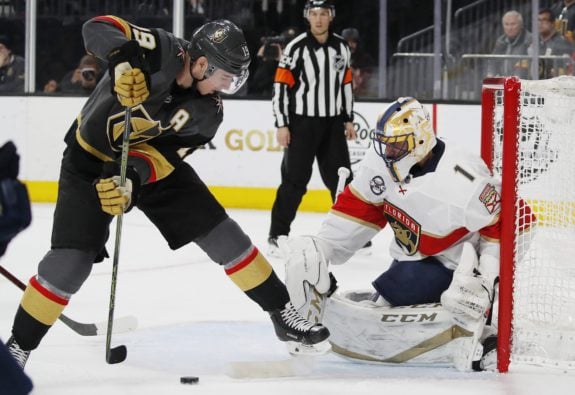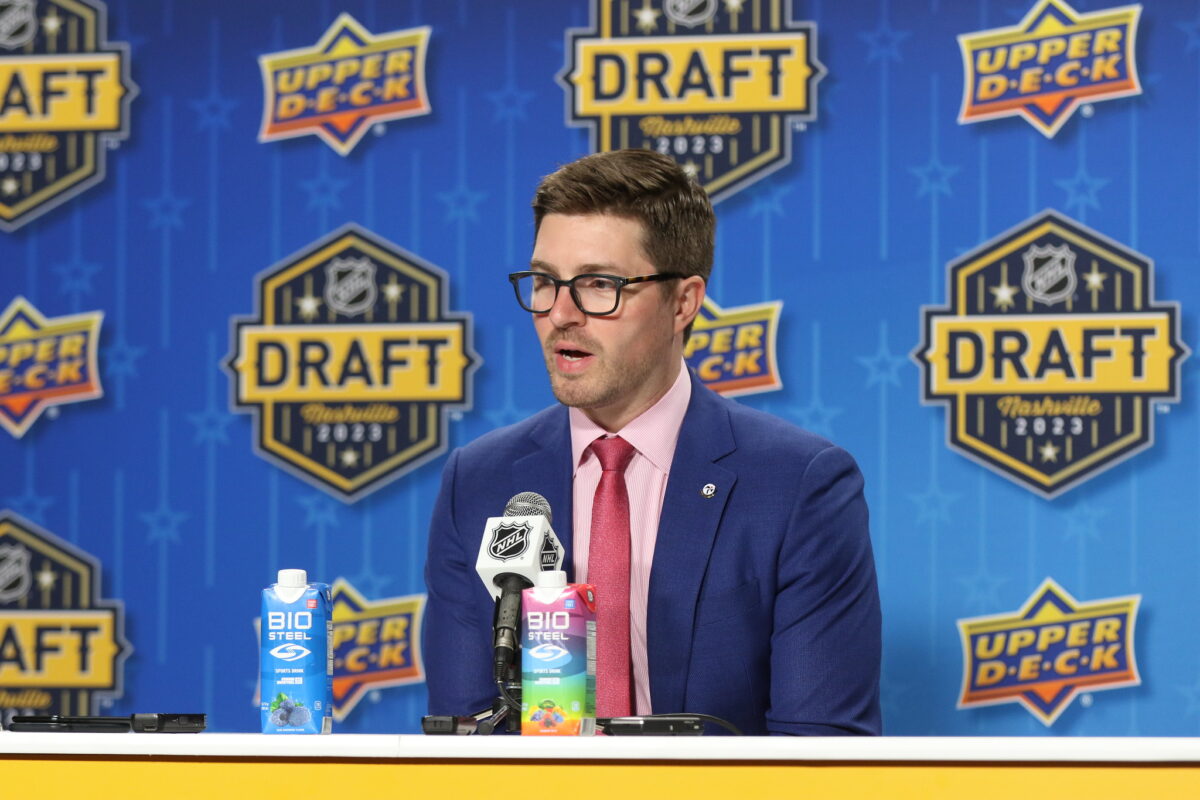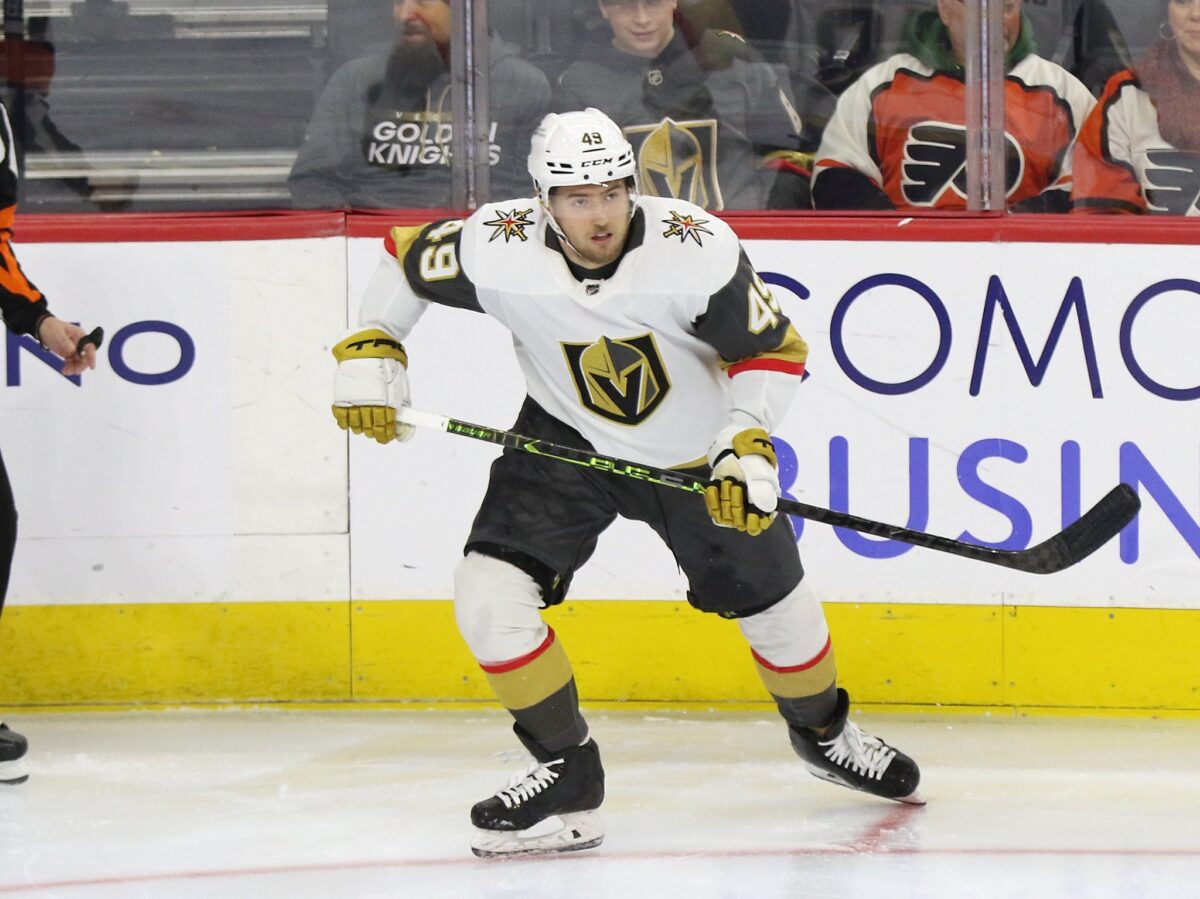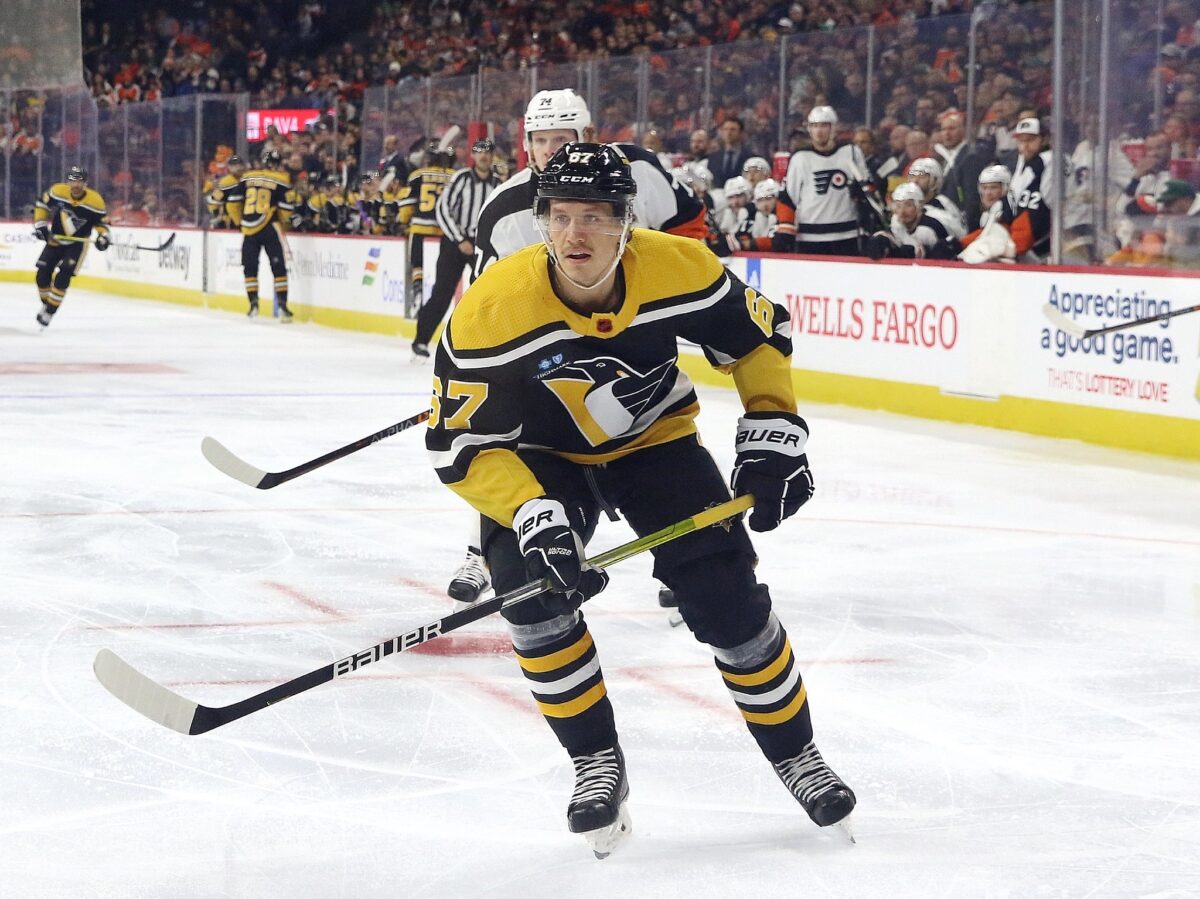It wasn’t a blockbuster, however it was meaningful. Has anyone talked about it though? I cannot find any proper analysis of the Reilly Smith trade to Pittsburgh from this offseason. Everyone was clearly cottaging in the Muskokas. Well, if you want something done, sometimes you’ve gotta do it yourself.
One of the marks of a good general manager is identifying weaknesses on other teams and exploiting them for his own benefit. Imagine that one of the hockey operations’ post-season, pre-draft tasks is to perform a SWOT analysis of each NHL roster. Examining salary caps, years remaining on contracts, (among other areas) and seeing where a weakness lies. Now, your counterparts may also do the work for you by sending out an email or a group text (yes, NHL general managers have a group text chain) where they tell you that someone is available.

These past two offseasons it’s not a stretch to imagine Vegas Golden Knights’ general manager Kelly McCrimmon leading the way on that chat. First, with Max Pacioretty last summer, and now this offseason with Reilly Smith. Vegas is the left-wing factory that keeps on giving, and Pittsburgh Penguins’ President of Hockey Operations and general manager Kyle Dubas (let’s all take a quick breath after that sentence opening) was quick to jump on this opportunity. Dubas traded for Reilly Smith and the two years and $10 million total cap dollars ($5 million per season) left on his contract in exchange for a mere third round draft pick in the 2024 NHL entry draft.
In identifying Smith as a top-six forward who can fill an area of weakness for Pittsburgh – second line left wing – Dubas paid a small price in draft capital, and a reasonable price on the salary cap to plug this hole.

Smith’s reputation is as a glue guy, someone who brings a little bit of everything to a line. It doesn’t sound fancy, though in hockey lore these are the types of players you need to augment your lineup with in order to win. The fact that Smith will be receiving a gaudy Stanley Cup champion’s ring soon enough lends credence to that trope.
As we prepare for this coming season, let’s take a look at what this version of Reilly Smith can reasonably be expected to contribute to the Penguins.
Boxcar Stats for Your Trading Card Pleasure
| Season | Age | Games Played | Goals | Assists | Points |
| 2020-21 | 29 | 53 | 14 | 11 | 25 |
| 2021-22 | 30 | 56 | 16 | 22 | 38 |
| 2022-23 | 31 | 78 | 26 | 30 | 56 |
First, I have zero issue washing Smith’s 2020-21 season. Let’s face it, we all had a lot going on in real life at that point, and his production the next year is far more indicative of a typical season (and he had a slightly lower shooting percentage in 21-22 to boot).
In 10 full NHL seasons dating back to 2013-14 with Boston, Smith has had six seasons with 50 or more points. Last season was his second-highest goals and points total of his career. That is clearly a positive coming into a year where he will share the ice with a five-man unit that includes Evgeni Malkin and Erik Karlsson.
Everyone Loves Advanced Math
From an analytics perspective, last season was a tale of two players. In the regular season, Smith was on the right side of 50% across the board, showing positive defensive play in all areas, and being given the second-most defensive zone starts of his six year tenure in Vegas.
The playoffs however were another story, and not a positive one for the Penguins or their fans. Yes, you can claim ‘small sample size’, however 22 games is more than a quarter of an NHL season, and thus enough time to draw conclusions.
You’ll see in the second/lower set of columns (the ones I’m using for reference) that most of Smith’s playoff metrics were below 50% (which meant that his presence on the ice was a net-negative for Vegas. Yes, he had a couple of positives, including SF% (Shots For Percentage), GF% (Goals For Percentage%), HDCF% (High Danger Chances For Percentage) and HDGF% (High Danger Goals For Percentage). The first two categories bleed into the latter two, and these categories are examples of the limitations of analytics. If Smith is on a line that is scoring, which he was, then he can be a passenger on those lines and still come out with strong metrics in these categories.
The ones that truly tell the story are his CF% (Corsi For Percentage), FF% (Fenwick For Percentage), and xG% (Expected Goals Percentage). Corsi speaks to shot attempts by either team, and is a measure of which team has control while someone is on the ice. 47.49% is what you’d expect to see from a player on a losing team during the regular season, not a driver on a Cup winner. Expected goals is exactly what it sounds like, and a 48.88% number, below the 50% break-even threshold, is a strong illustration of why Vegas was willing to trade Smith and use that cap space to re-sign Ivan Barbashev.

Fenwick is an even stronger metric, as it’s always used to measure someone’s impact relative to other people on the ice at that time or the team overall. A weak score in any Fenwick metric means that you’re not having the same effect at tilting the ice for your team as other players are. Smith’s Fenwick For % being lower than 50% means that he did not have the same overall impact on the ice that his linemates at that time did. In other words, Smith was being carried by the spectacular play of William Karlsson.
Hope vs Reality
On this team, the hope is that Smith can be the defensive conscience for Malkin (and Rickard Rakell). Smith failed in that regard in either the best or second-best system in the NHL last year (the Carolina Hurricanes have now entered the chat), and with 10 full seasons of NHL miles on his body, is he going to improve this year? What effect will the short summer of rest and training have on him, coming to a team that is doing their best to go on a deep playoff run? Smith is not being set up for success in being able to carry his line this year.

The issue then becomes, Pittsburgh paid $5 million per season for second line production and specifically, a defensive presence on a defensively porous second line, and paid someone who was a defensive liability in the playoffs last season.
Yes, there is a universe where head coach Mike Sullivan could sit down with Smith, ask him to sacrifice his offense to be a pure defensive conscience on this line. Look around the NHL, we are not living in that universe.
Kyle Dubas is well-known for his love of analytics. Unfortunately, the math does not add up on this one, and the odds are that this was not a smart play.
